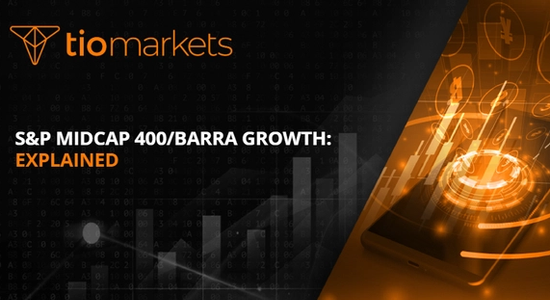Cryptocurrency: Explained | TIOmarkets
Welcome to the comprehensive glossary on trading, where we delve into the intricate world of cryptocurrency. This article aims to demystify the complex concept of cryptocurrency, breaking it down into digestible sections that will provide you with a robust understanding of what it is, how it works, and its significance in the trading market.
As the world of finance continues to evolve, the advent of digital currencies has revolutionized the way we view and handle money. Cryptocurrencies, with their decentralized nature and potential for high returns, have attracted a multitude of investors and traders worldwide. This article will serve as your guide, explaining the ins and outs of cryptocurrency in the context of trading.
What is Cryptocurrency?
Cryptocurrency is a type of digital or virtual currency that uses cryptography for security. Unlike traditional currencies, cryptocurrencies are decentralized, meaning they are not controlled by any central authority such as a government or financial institution. This decentralization is made possible through blockchain technology, a distributed ledger enforced by a network of computers called nodes.
The first and most well-known cryptocurrency is Bitcoin, which was created in 2009 by an anonymous person or group of people using the pseudonym Satoshi Nakamoto. Since then, thousands of alternative cryptocurrencies, often referred to as altcoins, have been created, each with its unique features and uses.
Key Features of Cryptocurrencies
Cryptocurrencies are characterized by several key features that distinguish them from traditional currencies. Firstly, they are digital, meaning they exist only in the digital realm and do not have a physical form. Secondly, they are decentralized, operating on a technology called blockchain, which is a type of distributed ledger.
Another key feature of cryptocurrencies is their limited supply. For instance, the total number of bitcoins that will ever be produced is capped at 21 million. This scarcity is one of the factors that contribute to the value of cryptocurrencies. Lastly, cryptocurrencies offer the potential for anonymity as transactions can be conducted with minimal personal information.
The Role of Cryptography
Cryptography plays a crucial role in the operation of cryptocurrencies. It is used to secure transactions and control the creation of new coins. Cryptography is a method of protecting information by transforming it into an unreadable format. Only those who possess a secret key can decipher the information.
In the context of cryptocurrencies, cryptography is used to convert transaction data into a series of numbers and letters. This ensures the security and privacy of transactions, making it nearly impossible for hackers or any third party to manipulate the data.
How Does Cryptocurrency Work?
Cryptocurrency operates on a technology known as blockchain. A blockchain is a type of distributed ledger that records all transactions across a network of computers. Each transaction is stored in a block, and these blocks are linked together to form a chain, hence the name blockchain.
When a cryptocurrency transaction is made, it is grouped together in a block with other transactions that have occurred in the last 10 minutes. These blocks are then added to the blockchain in a linear, chronological order. Each block contains a record of the transaction data, as well as a timestamp and a reference to the previous block in the chain.
Blockchain Technology
Blockchain technology is the backbone of cryptocurrency. It is a type of distributed ledger that records all transactions across a network of computers. The blockchain is maintained by a network of nodes, which are computers that validate and record transactions. Each node has a copy of the entire blockchain, which it updates every time a new block is added.
The use of blockchain technology ensures the decentralization of cryptocurrencies. Since the blockchain is maintained by a network of nodes, there is no central authority that can control or manipulate the system. This makes cryptocurrencies resistant to censorship and interference from governments and financial institutions.
Mining
Mining is a process where transactions are verified and added to the blockchain. It involves solving complex mathematical problems to find a new block, which is added to the blockchain. In the case of Bitcoin, this process is known as proof-of-work.
Miners are rewarded with a certain amount of cryptocurrency for each block they add to the blockchain. This reward serves as an incentive for miners to continue their work and maintain the integrity of the blockchain.
Trading Cryptocurrencies
Trading cryptocurrencies involves buying and selling digital currencies on a cryptocurrency exchange. The goal is to buy the cryptocurrency at a low price and sell it at a higher price, thereby making a profit. Cryptocurrency trading can be profitable, but it also comes with a high level of risk due to the volatility of the market.
There are two main types of cryptocurrency trading: spot trading and derivatives trading. Spot trading involves buying and selling the actual cryptocurrency. On the other hand, derivatives trading involves buying and selling financial contracts that derive their value from the performance of the underlying cryptocurrency.
Cryptocurrency Exchanges
Cryptocurrency exchanges are platforms where you can buy, sell, and trade cryptocurrencies. These platforms play a crucial role in the cryptocurrency market, providing a venue for traders and investors to exchange different types of cryptocurrencies. Some of the most popular cryptocurrency exchanges include Binance, Coinbase, and Kraken.
When choosing a cryptocurrency exchange, it's important to consider factors such as security, fees, the range of available cryptocurrencies, and the user interface. It's also crucial to ensure that the exchange is regulated in your jurisdiction.
Trading Strategies
Successful cryptocurrency trading requires a well-thought-out strategy. Some popular cryptocurrency trading strategies include day trading, swing trading, scalping, and holding. Day trading involves making multiple trades within a single day, taking advantage of short-term price movements. Swing trading, on the other hand, involves holding a cryptocurrency for a period of time to take advantage of price swings.
Scalping is a strategy that involves making a large number of trades within short time intervals to take advantage of small price changes. Holding, also known as HODLing, is a strategy where a cryptocurrency is bought and held for a long period, regardless of price fluctuations.
Conclusion
Understanding cryptocurrency and its implications in the trading world is crucial for anyone looking to venture into this digital frontier. With its decentralized nature, potential for high returns, and growing acceptance worldwide, cryptocurrency presents a unique and exciting opportunity for traders.
However, it's important to remember that cryptocurrency trading is not without risks. The market is highly volatile, and prices can fluctuate wildly in a short period. Therefore, it's crucial to conduct thorough research and develop a solid trading strategy before diving into the world of cryptocurrency trading.
Start Trading Cryptocurrency with TIOmarkets
Ready to take the plunge into the dynamic world of cryptocurrency trading? Join TIOmarkets, a top-rated forex broker with over 170,000 accounts opened across more than 170 countries. Experience the thrill of trading over 300 instruments across 5 markets, including Forex, indices, stocks, commodities, and futures, all with low fees. Enhance your trading skills with our comprehensive educational resources and step-by-step guides. Don't miss out on this exciting opportunity – Create a Trading Account today and start your journey towards successful cryptocurrency trading!

Risk disclaimer: CFDs are complex instruments and come with a high risk of losing money rapidly due to leverage. You should consider whether you understand how CFDs work and whether you can afford to take the high risk of losing your money. Never deposit more than you are prepared to lose. Professional client’s losses can exceed their deposit. Please see our risk warning policy and seek independent professional advice if you do not fully understand. This information is not directed or intended for distribution to or use by residents of certain countries/jurisdictions including, but not limited to, USA & OFAC. The Company holds the right to alter the aforementioned list of countries at its own discretion.
Related Posts
undefined



